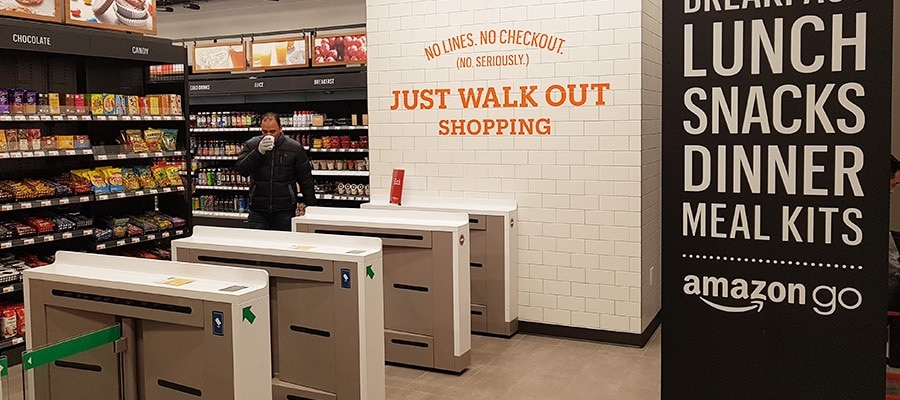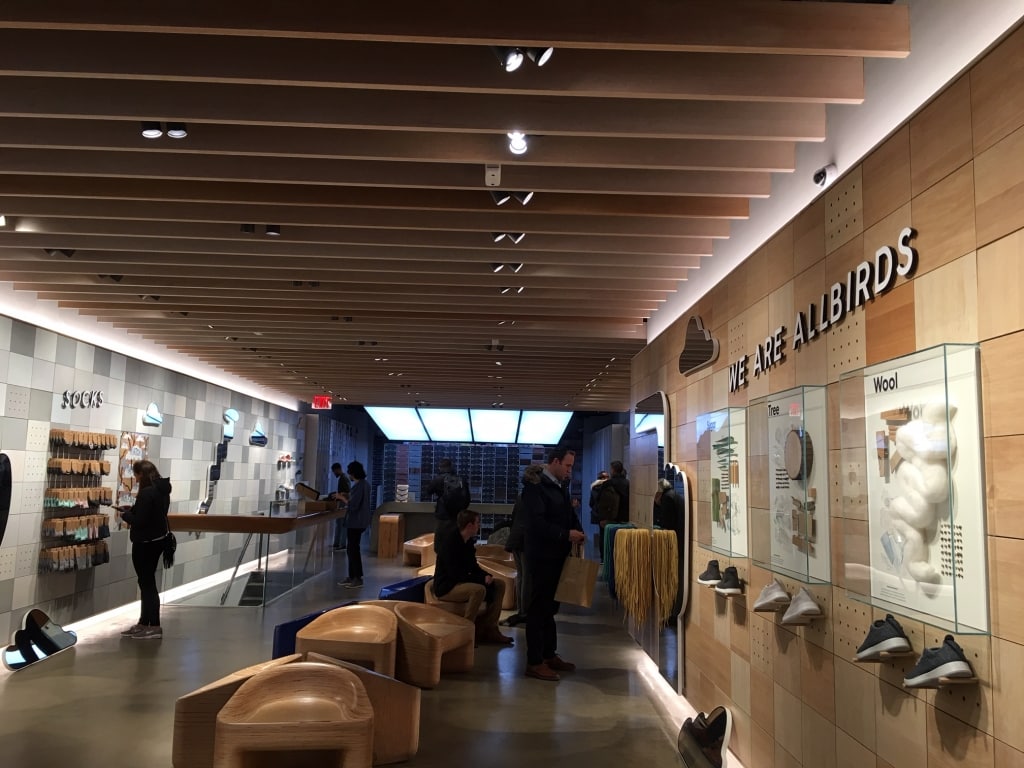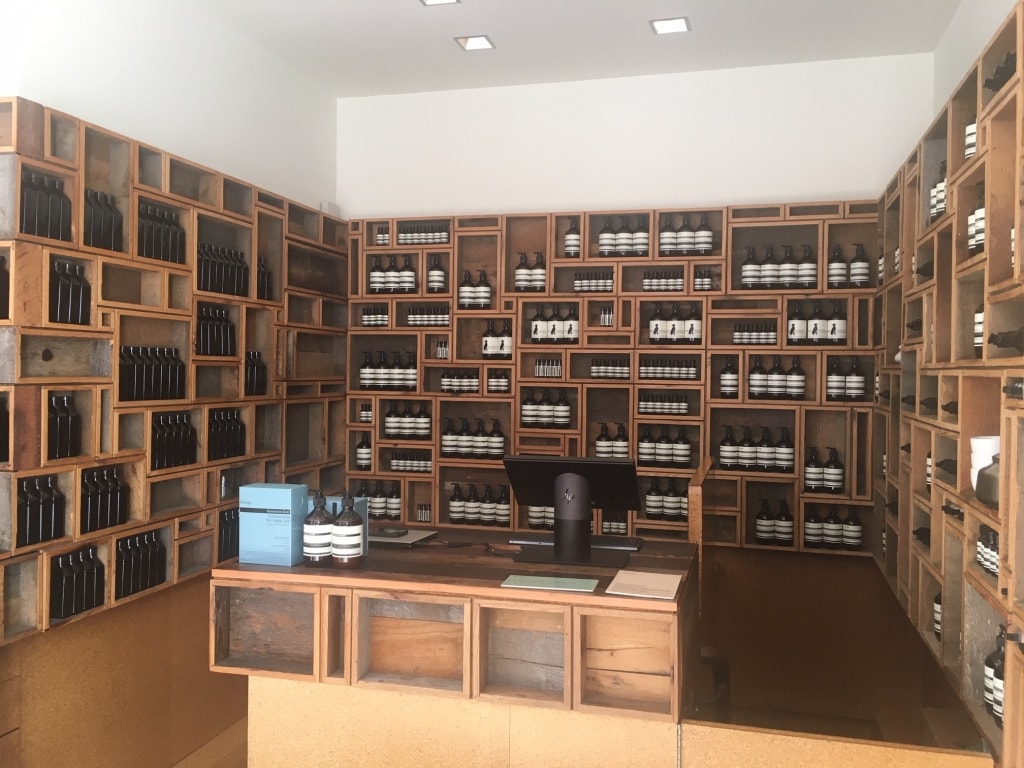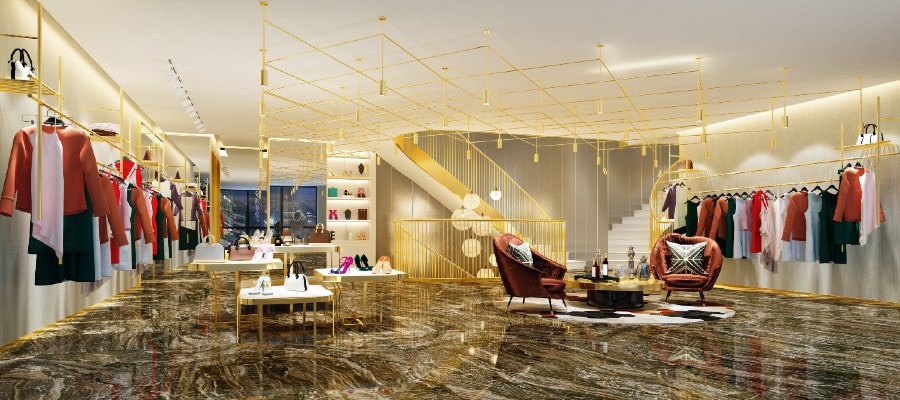Retail & Distribution
These 9 New York Store Tours Offer a Glimpse into the Future of Shopping
10 februari 2020

These nine examples illustrate the many roles stores are serving in the 2020s, including:
Service Emporium
Nordstrom’s NYC flagship store seamlessly incorporates an abundance of services among the merchandise, all underpinned by vital but largely invisible in-store technology such as an augmented reality lipstick finder, an automated returns kiosk and phone charging stations. Seven restaurants at Nordstrom NYC, from a pizza counter to a martini bar, are complemented by multiple service offerings including 24/7 online order pickup, clothing alterations, shoe repairs, stroller cleaning, personal styling appointments, a brow bar and tech-enabled customer service.
Takeaway: Services draw customers into stores.
Sustainability Showcase
The Silicon Valley-born Allbirds shoe brand personifies environmentally responsible values, with maximum-comfort designs made of wool, wood, eucalyptus plants, sugar cane and castor oil as well as recycled materials . Its spacious NYC flagship is organic and “undesigned,” like the shoes themselves, with minimalist lines and displays explaining where materials come from, with a goal of emulating the comfort of the shoes themselves.

The All Birds Store in New York City
Takeaway: Infuse your brand values and identity throughout the store experience.
The Demo Experience
Outdoor clothing retail brand Woolrich demonstrates how consumers can connect with a product better when they can envision it in their lives. The brand fosters this by immersing customers in the cool, outdoors environments where their products live. In its NYC flagship, an epic snow room allows customers to test Woolrich outwear in extreme weather conditions such as snowstorms and freezing temperatures. Similarly, Casper’s NYC store features the Dreamery, where consumers can take a 45-minute nap to test the product.
Takeaway: Rip off the packaging and provide a hands-on experience with the product.
Find the key to success in today’s retail landscape with a well-designed omnichannel strategy.

Relationship Builder
The Chanel Beauté Studio store in Soho, NYC takes the focus off buying and instead seeks to build long-term relationships with Millennials by enabling them to move through a full brand experience. After storing personal items in a locker, store visitors can register on an app and step through a daily beauty routine—wash their face, try creams and eye care, get makeup applied, visit a perfumery and beauty parlor, and engage with a stylist or take classes. Selling is not the point; consumers can choose in-store pickup or later buy elsewhere.

The Chanel Beauté Studio in New York City
Takeaway: Use the store to educate and inform for long-term relationship-building.
Immersive Experience
With a modern-day version of its original Niketown, Nike’s NYC’s House of Innovation 000 features data-driven localized collections, customization opportunities (alone or with an expert) and flexible space for events. It also allows consumers to interact with the store via smartphones, for example scanning to see an item or locate items on a display, and instant mobile checkout. VIPs get access to special events and features.
Takeaway: Create environments to ignite or renew excitement about established brands.
Convenience
Amazon Go grabbed headlines with the introduction of its cashier-free stores, which enable customers using Amazon prime app to walk in, grab what they need and walk out, without ever stopping at a cash wrap. Other retailers are adapting to growing expectations for convenience with curbside pickup, home delivery, grab and go goods and showrooming.
Takeaway: Understand customer journeys and create frictionless solutions for easy engagement.
Clienteling
Consumers express high levels of interest in personalized, bespoke experiences. Australian skincare company Aesop addresses this by empowering associates to access a single view of the customer, such as cross-platform history, loyalty status and preferences as well as services such as endless aisle and of course easy point of sales to create a highly personal and memorable in-store experience. Aesop uses Cegid Retail Shopping to accomplish this.

The Aesop Store in New York City
Takeaway: Feed huge appetites for personalization with associate-enabled tools available on multiple devices
Pop-up stores:
The pop-up store marketplace has expanded exponentially in the last 18 months. Pop-ups enable retailers to achieve many goals at low risk: exploring new markets, gathering customer feedback, accommodating seasonal demand or testing out any of the ideas seen here. Glossier pop-ups inside Nordstrom during the past holiday season, for example, enabled the primarily online retailer to sell perfume, a product that demands a personal encounter.
Takeaway: Leverage pop-ups for fast feedback on new ideas.
Dark stores as logistic hubs:
As delivery windows shorten, retailers are increasingly looking at store inventory. Amazon is buying shuttered stores for fulfillment, and grocers and mass merchants are embracing “dark stores,” turning former stores into e-Commerce-only fulfillment centers, while specialty and fashion retailers are leveraging their store footprints, prime locations and in-store capital resources to fulfill e-Commerce orders faster and better using ship from store. In a variation on this theme, both Albertsons and Stop & Shop are testing automated “micro-fulfillment centers” in dedicated spaces at the back of their stores. Robots do the work at two of the Albertsons locations.
Takeaway: Consider omnichannel demands in determining the role of the store and leveraging locations.
Rethinking the Brick-and-Mortar Store
The media has looked at the rash of store closings and lamented the death of the brick-and-mortar store. Retailers know better. Stores aren’t dying, they’re changing. By leveraging their presence right where the consumers are, retailers can repurpose their spaces to deliver brand experiences that speak to consumers’ thirst for convenience, personalization and excitement when they visit a store.
Find the key to success in today’s retail landscape with a well-designed omnichannel strategy.



